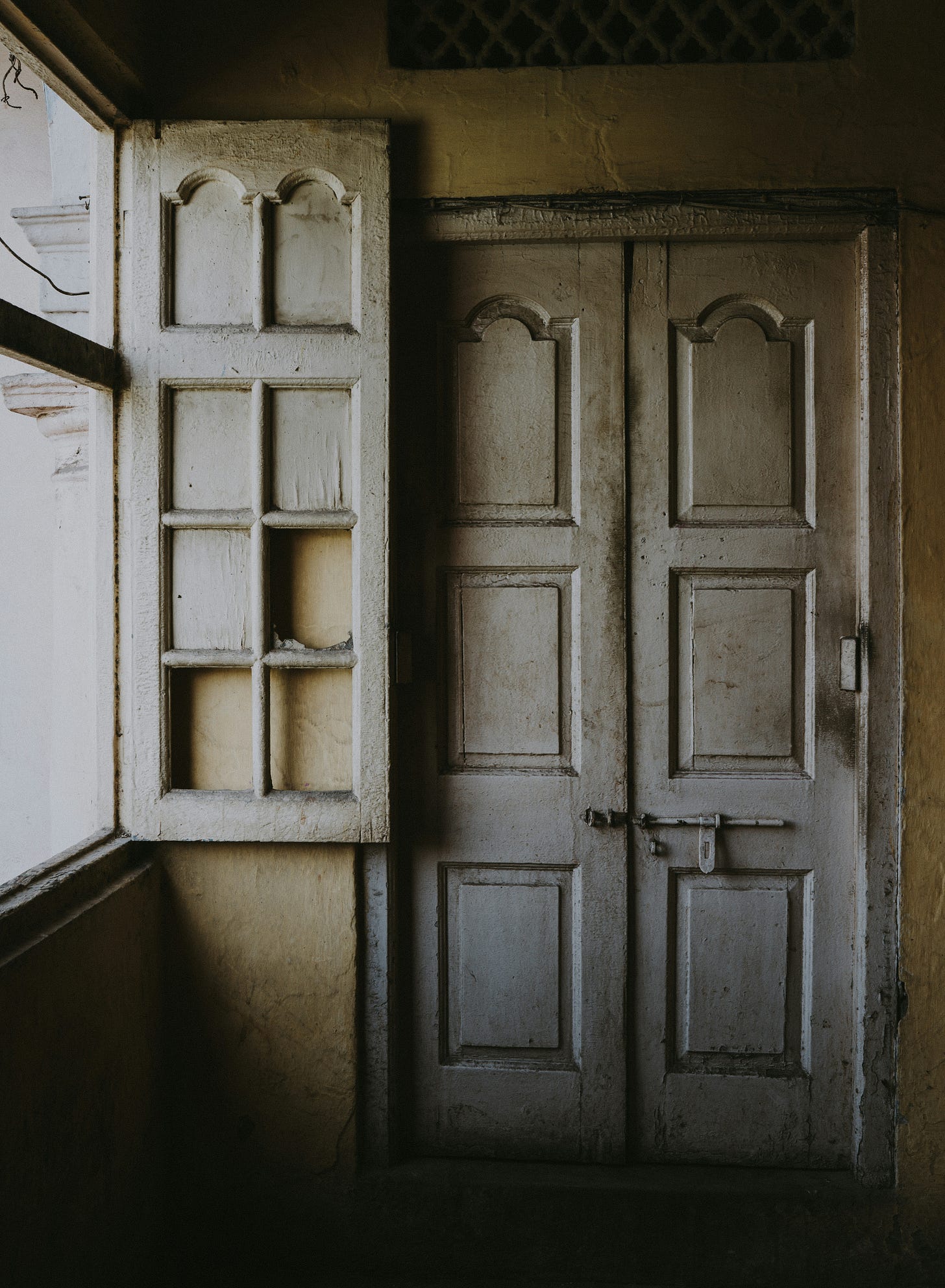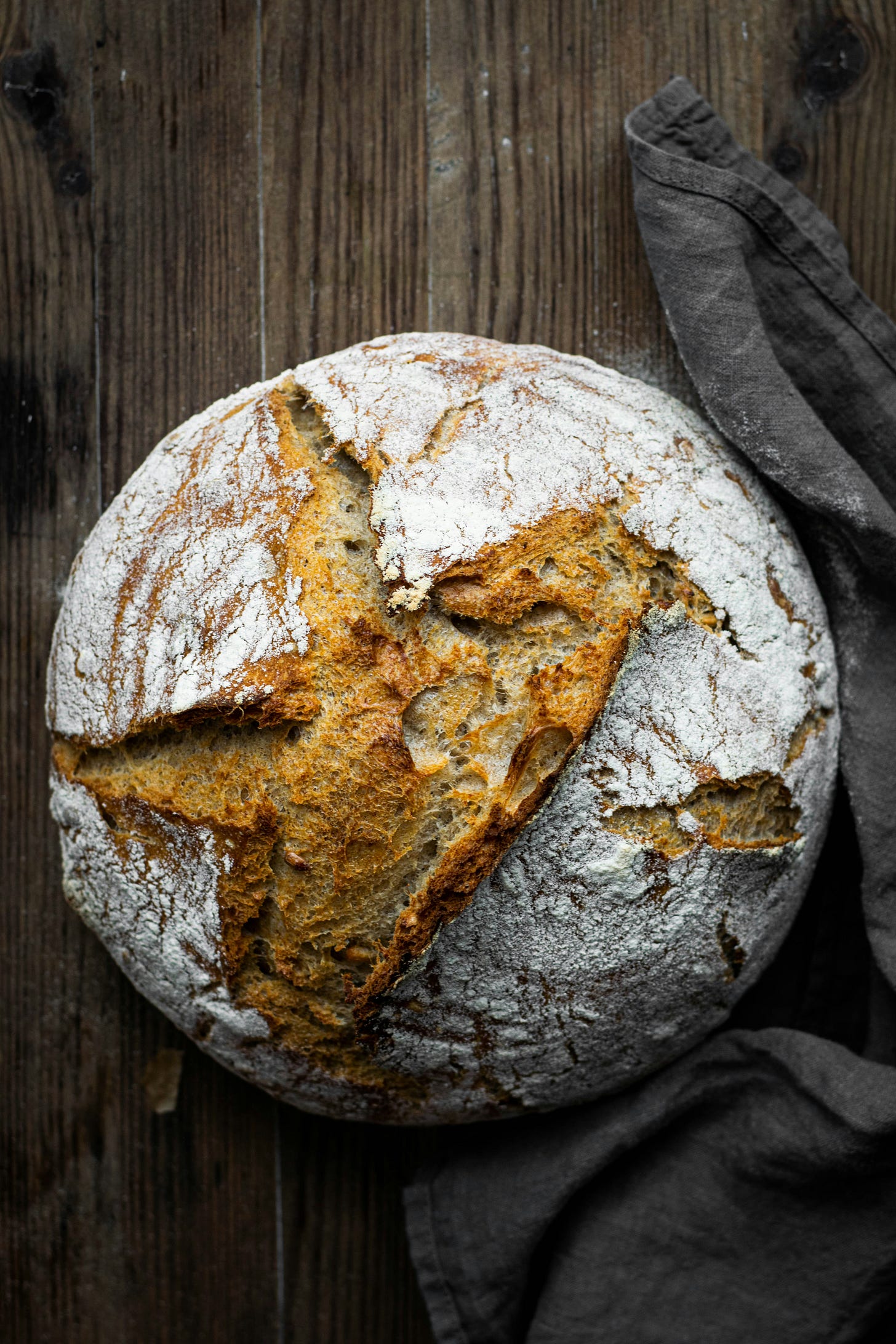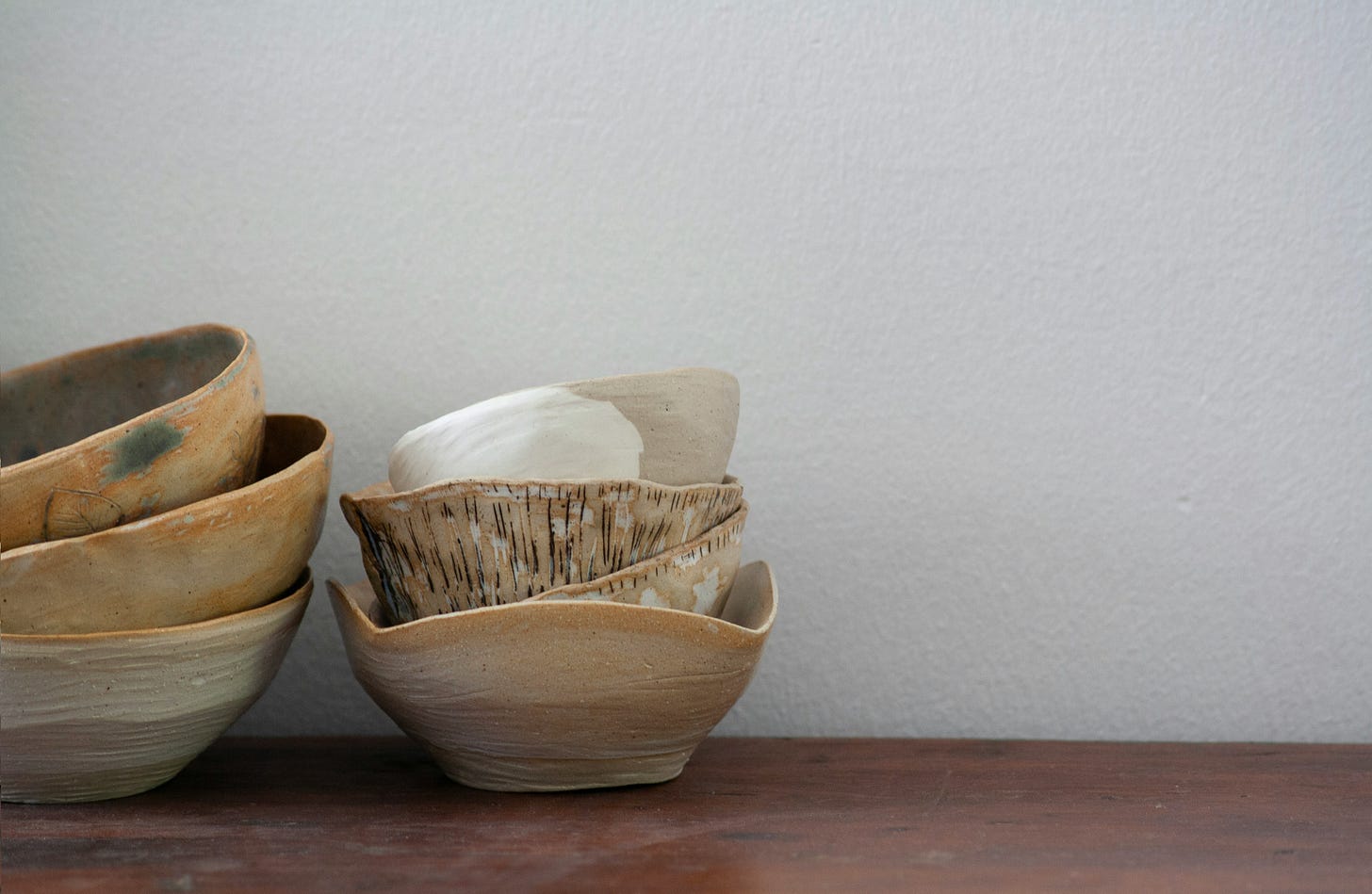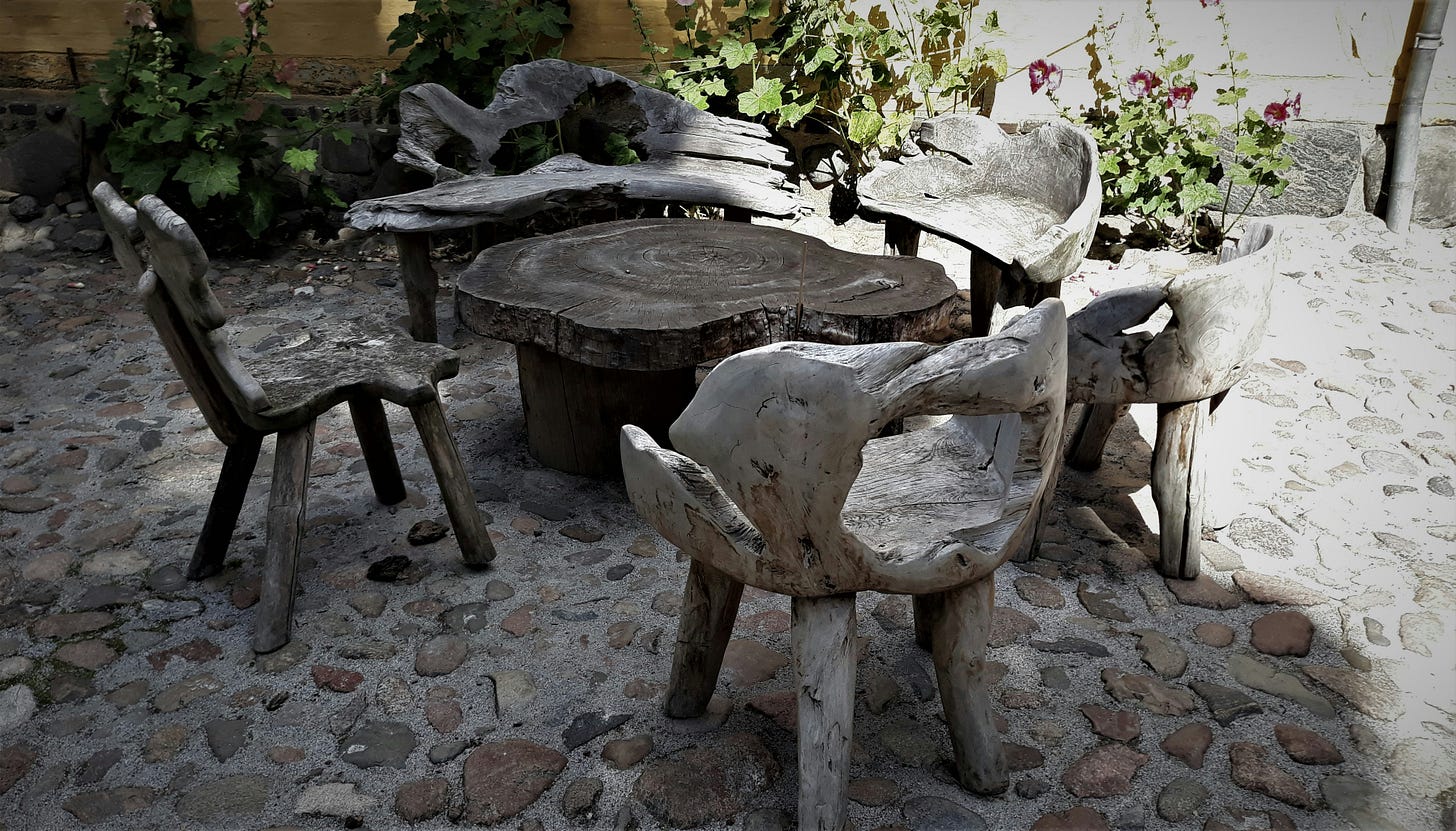A few weeks ago we looked at one genre of Stoic artwork, vanitas paintings, which were especially popular in Northern Europe in the 17th century. If you recall, these paintings featured heaps of items that symbolized death, decay, the passage of time, and the dangers of luxury. Many vanitas paintings were directly inspired by Stoic messages from Seneca, who often wrote about remembrance of death.
Today we will look at an artistic and philosophical genre that is strangely similar but also completely different. Wabi sabi is an intellectual movement from Japan that captures the peculiarly Japanese aesthetic of Zen. It’s known for prizing humility and authenticity, admiring the beauty of simple and rustic objects, and inspiring an appreciation for the transience and ephemerality of nature. As the wonderfully-named author Andrew Juniper notes in Wabi Sabi: The Japanese Art of Impermanence, this philosophy is “sublime in its subtlety”:
As the artistic mouthpiece of the Zen movement, wabi sabi art embodies the lives of the monks and is built on the precepts of simplicity, humility, restraint, naturalness, joy, and melancholy as well as the defining element of impermanence. (p. ix)
Wabi sabi is an intuitive appreciation of a transient beauty in the physical world that reflects the irreversible flow of life in the spiritual world. It is an understated beauty that exists in the modest, rustic, imperfect, or even decayed, an aesthetic sensibility that finds a melancholic beauty in the impermanence of all things. (p. 51)
Common examples of wabi sabi-inspired artwork include flower arrangements that consist of a single asymmetrical branch; exquisite pottery that has been broken and pieced back together; and driftwood pieces that showcase natural processes such as growth, death, and erosion. The Japanese tea ceremony is also famously wabi-sabi. In contrast to Chinese tea ceremonies, in which everything is expected to be ornate, perfect, and hierarchical the traditional Japanese tea ceremony displays a love of all things wabi sabi—for example, creating very small and low entrances to the tea house in order to make everyone bow humbly as they come in, and eliminating social hierarchy so that everyone participates as equals. These are all expressions of an egalitarian ethic that emphasizes humility, sincerity, and (to use a Stoic expression here) living according to nature.
In fact, this Japanese philosophy shares so many similarities with Stoicism that you could be forgiven for mistaking wabi sabi principles for a summary of Marcus Aurelius’ Meditations. Leonard Koren, one of the earliest and best-known Western interpreters of wabi sabi, suggests that the “wabi-sabi state of mind” centers around accepting the inevitable processes of nature and appreciating the cosmic order. “Nothingness itself,” Koren tells us, “is alive with possibility. In metaphysical terms, wabi-sabi suggests that the universe is in constant motion toward or away from potential” (Wabi Sabi for Artists, Designers, Poets and Philosophers, p. 45).
These are also well-established elements of Stoic physics. Influenced by the pre-Socratic philosopher Heraclitus, who held that the cosmos was constantly in flux, the ancient Stoics adopted principles of universal change as a controlling and beneficial property of nature. Just a few examples from the Roman Stoics:
This is what Heraclitus means when he says, "We step into the same river twice and not at all." The name of the river remains the same; the water has passed on. This is more evident in a river than in a human being; but a current sweeps us along as well, and it is no less swift. For that reason I am amazed that we are so far out of our minds as to love a thing that is so fleeting--the body--and that we are afraid ever to die, when every moment is the death of our previous condition. Why be afraid of something happening once when it is happening every day? I have spoken of how the human being is matter in flux, perishable and subject to every influence. The universe as well, though enduring and undefeated, changes and does not stay the same. For though it contains everything it had before, it contains those things in a different way; it changes their arrangement.
Seneca, Letters on Ethics, 58.23-24
I am composed of the formal and the material; and neither of these will perish into nothingness, just as neither arose from nothingness. Thus every part of me will be appointed by change to a new position as some part of the universe, and that again will be changed to form another part of the universe, and so on to infinity. It was through a similar process of change that I too came to exist, and my parents before me, and so again to infinity in the other direction.
Marcus Aurelius, Meditations, 5.12
At all times some things are hastening to come into being, and others to be no more; and of that which is coming to be, some part is already extinct. Flux and transformation are forever renewing the world, as the ever-flowing stream of time makes countless eternity forever young. So in this torrent, in which one can find no place to stand, which of the things that go rushing past should one value at any great price? It is as though one began to lose one's heart to a little sparrow flitting by, and no sooner has one done so than it has vanished from sight. Indeed, the very life of every one of us is like an exhalation from our blood or inhalation from the atmosphere; for such as it is to draw a breath of air into your lungs and then surrender it, so it is to surrender your power of respiration as a whole, which you acquired but yesterday or the day before at the time of your birth, and are now surrendering to the source from which you first drew it.
Marcus Aurelius, Meditations, 6.15
Clearly, the idea of impermanence, ephemerality, change, and mortality infuses Stoicism just as it does wabi sabi. I think there is potential for Stoics to borrow aesthetic ideas from wabi sabi to create beautiful new art today. So let’s look at some of the aesthetic considerations behind this centuries-old tradition.
Wabi Sabi as an Aesthetic
The Zen principles of impermanence and modesty lead to a specific wabi sabi aesthetic: organic, asymmetrical, uneven, unforced, simple, subdued, functional. Koren tells us that the material qualities of wabi sabi include (points cited from Wabi Sabi for Artists, Designers, Poets and Philosophers, pp. 62-71):
The suggestion of natural process
Irregular, odd, misshapen, awkward
Intimate, small, compact, quiet, inward-oriented
They inspire a reduction of psychic distance between one thing and another thing; between people and things
Small, secluded and private environments…enhance one’s capacity for metaphysical musings
Tranquil, calming, enveloping
Unpretentious, understated, unassuming…yet not without presence or quiet authority
Easily coexist with the rest of their environment
Appreciated only during direct contact and use; they are never locked away in a museum
Earthy, coarse, unrefined
Rich in raw texture and rough tactile sensation
Murky, vague, blurry, attenuated
Muddy earth tones, smoky hues of dawn and dusk
Wabi sabi prizes things that are made from natural materials, have nothing extraneous or unnecessary, and are well suited to their purpose. The idea is that an object will perform its function beautifully and exist harmoniously with everything around it (not acting arrogantly or fancying itself better than others!).
In other words, wabi sabi is the exact opposite of grand and imposing art and architecture that seeks to impress a patron’s wealth, sophistication, superiority, or power on the viewer. Wabi sabi makes its statement through simplicity and humility, aligning itself with nature and inspiring calm reflection in the viewer. To me this seems perfectly aligned with Stoicism, which of course aims to live in harmony with nature, natural processes, and other people. I really like how Juniper describes this ideal with reference to Zen:
After his stint of extreme asceticism the Buddha advocated the middle road, not indulging in excess but living in harmony with the natural world. This harmony with nature was also a major theme in Taoist thought, and this has been incorporated into the wabi sabi worldview. Wabi sabi treads a fine line between enjoying the beauty of things while knowing that they are as transient as everything else. (p. 151)
If I were to create a Stoic artistic movement, that is exactly what I would propose as its driving principle: enjoying the beauty of things while knowing that they’re as transient as everything else. Appreciating loveliness of form and function where we find it—right here, right now—rather than wishing for a different type of beauty that isn’t present and may not exist anyway. Enjoying a flower both for its own unique and individual beauty, but also as a representation of larger processes (ephemerality and mortality). Prizing artistry that elevates the mind and spirit to the level of the cosmos through a single, simple piece of pottery or flower arrangement—or even baking bread:
Truths as this should be carefully noted, that even the by-products of natural processes have a certain charm and attractiveness. Bread, for instance, in the course of its baking, tends to crack open here and there, and yet these very cracks, which are, in a sense, offences against the baker’s art, somehow appeal to us and, in a curious way, promote our appetite for the food. And again figs, when fully ripe, tend to split open; and in olives which are ready to drop, the very fact of their impending decay lends a peculiar beauty to the fruit. And ears of corn bending toward the earth, and the wrinkled brows of a lion, and the foam dripping from the jaws of a wild boar, and many other things are far from beautiful if one views them in isolation, but nevertheless, the fact that they follow from natural processes gives them an added beauty and makes them attractive to us. So if a person is endowed with sensibility and has a deep enough insight into the workings of the universe, he will find scarcely anything which fails to please him in some way by its presence…
Marcus Aurelius, Meditations, 3.2
Surrounded by luxury and splendor, Marcus still found a way to appreciate the simple and humble objects in his life. Ripening figs, laden olive branches, and even boar spittle reminded him of the magnificent order of nature and the wider whole of which he was a part. Ornate golden goblets, purple royal robes, the spoils of war, and all the luxuries of imperial villas didn’t catch his eye in the same way as the unfolding of those simple natural elements. Marcus managed to find true, authentic beauty beneath all the pomp and circumstance of his life as Roman emperor. Surely he qualifies as a wabi sabi master.
Following Marcus’ example, we can learn to see beauty in unexpected places—as Koren puts it, “beauty of the inconspicuous and overlooked aspects of nature” (p. 22):
“Greatness” exists in the inconspicuous and overlooked details…at moments of inception or subsiding…Wabi-sabi is about the minor and the hidden, the tentative and the ephemeral: things to subtle and evanescent they are invisible to vulgar eyes. (p. 50)
That is precisely what Marcus Aurelius, through his Stoic education, has learned to do. He names objects that typically are not thought of as beautiful—from wild beasts to elderly people—”which will not seem persuasive to everyone, but will only strike home with those who are genuinely familiar with nature and all her works” (Meditations, 3.2). Like a broken pot or crooked branch in the wabi sabi aesthetic, these things may not be conventionally beautiful, but they have a certain charm that arises from their position in nature. As small parts of the larger whole, they represent the recurrent elements of the natural world and draw our attention to the progression and patterns of the cosmos. They remind us of deeper truths that we might otherwise overlook or fail to appreciate.
From this perspective, Stoicism is a natural fit with the wabi sabi aesthetic, and I think we can play this up in our everyday lives. We can pause to notice a scruffy flower growing through a crack in the sidewalk, and we can value items that might be a bit rough around the edges but still get the job done. There are plenty of opportunities to cultivate a wabi sabi sensibility as we go about our routine business.
I think we can also try to produce art—either fine art such as paintings, or practical art such as furniture and fabrics—that play up the ethos of Stoic wabi sabi. These arts can help draw our attention to certain philosophical principles, reminding us of the ephemerality of beautiful things or the benefits of practicing humility. We can borrow quite a lot from the Japanese wabi sabi playbook and prize understated, functional objects that surround us in everyday life. A Stoic version of this aesthetic would continue emphasizing nature through the use of organic materials, and it would promote humility, simplicity, and coexisting harmoniously with the rest of its environment.
I also think it would be important to showcase an artwork’s individuality and authenticity. As more and more material goods are made by machine, and more and more art is made by computer, objects crafted by human hands will be more and more valuable. In the Stoic arts, this certainly reinforces the idea of virtue as a techne (technical craft), which could be mirrored by the creation of skillfully made objects.
So here is what I would say are some basic principles of Stoic wabi sabi:
Coexisting harmoniously with environment
Functional and suited to purpose
Organic materials
Craftsmanship that respects the materials (not working against them)
Depiction or suggestion of natural processes (growth, decay, erosion)
Sincerity
Authenticity
Prizing individuality and variety
Ethically produced (not wasteful, respecting people and environment)
Simple, not overly ornamented
What do you think? Is this a helpful way of looking at the world—reminding ourselves about the ephemerality of nature by surrounding ourselves (when possible) with simple, functional, and natural objects? Appreciating beauty where we find it rather than insisting on a narrow definition of physical beauty? I would love to hear about your experiences with wabi sabi and if you think this matches up well with Stoicism. Please let me know in the comments!








It is hard for me to describe how deeply this essay is resonating with me right now. I've saved it because I know I'll need to re-visit it often. 2025 has been a very difficult year so far. Money trouble, car trouble, etc. I know those are all indifferents, but I am struggling with how those things are limiting my photography trips. Creativity has been tough, to say the least.
I was superficially familiar with the concept of wabi sabi, but haven't considered it very much in a very long time. The way you relate it to Stoicism here is essentially a paradigm shift for me, opening up a realm of possibility. To be able to show the philosophy through visual representation! If I've done that before, it was purely accidental.
I don't know that I will be able to accomplish wabi sabi Stoic photography, but is absolutely something I will be thinking about and striving towards. I can't thank you enough for showing this way to me!
Brittany, Thank you for the thoughtful post. As a scientist and a former practicing microbiologist, the most fundamental reason I became a scientist and specifically, a microbiologist was because of the general idea of Wabi sabi--the appreciation of the minute, microscopic, beautiful and the mysterious and unknown. In a sense, a scientist searching for the source of the hidden beauty and function, i.e., that small organisms can have a significant impact--both good and bad--on all life forms. As you and the Stoics have stated so eloquently, we are trained to like, revel in, admire a contrived beauty such as perfect symmetry or asymmetry in fine art and architecture, hand-crafted objets d'art, refinements of the highest order, but in my opinion, this is just acting on our "Nature" and strong desire for ordering things so we can understand them better. This requires significant effort, or, as us bioscientists like to say, "bioenergy inputs" whether physical or mental or both, to achieve the final effect. "Nature" does this in a seemingly chaotic, "natural" way and gets at what I think the Stoics were focusing on when they said to act in harmony with Nature. So, yes, I believe Wabi sabi does appear to be in complete harmony with Stoic thinking and the Stoic way of life.